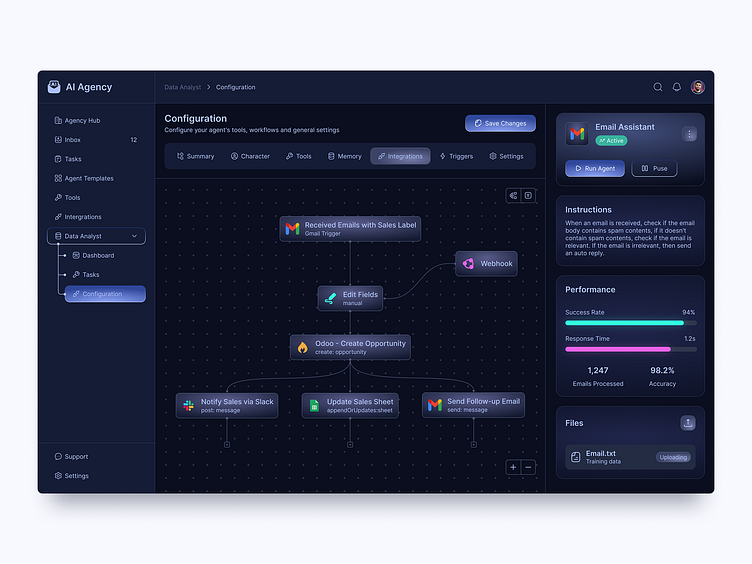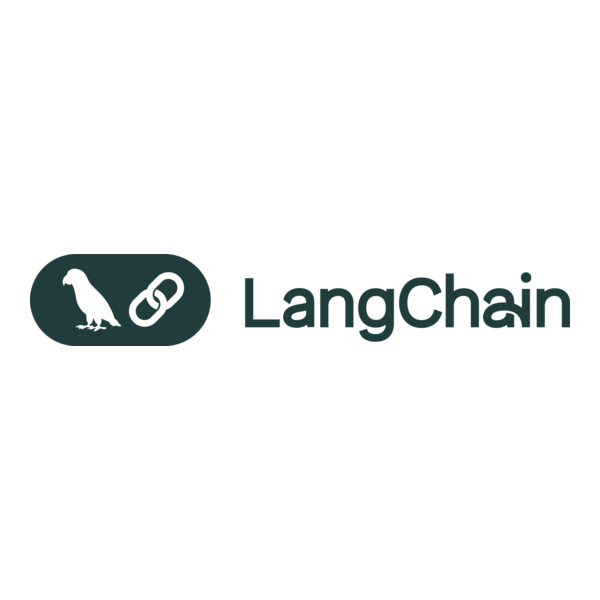
From Code to Cash: A Developer’s Guide to Monetizing LangChain Agents in the New AI Marketplace Era
The landscape of artificial intelligence is undergoing a seismic shift. For developers, the conversation is rapidly evolving from “Can I build an AI agent?” to “How can I turn my AI agent into a viable product?” The latest LangChain News isn’t just about a new integration or a library update; it’s about the dawn of the agent economy. A new ecosystem of AI agent marketplaces is emerging, creating unprecedented opportunities for developers to deploy, showcase, and monetize their creations in front of millions of users. This transition from personal projects to commercial products marks a pivotal moment for the entire AI community.
For too long, the path to monetization for independent AI developers was fraught with friction. It required building a full-stack application, handling user authentication, managing payments, and marketing the final product—a daunting task for even seasoned engineers. Now, specialized platforms are abstracting away this complexity, allowing developers to focus on what they do best: building intelligent, useful, and creative agents. This article serves as a comprehensive technical guide for LangChain developers looking to capitalize on this trend. We’ll explore how to build a production-ready agent, package it for deployment, implement advanced features that command a premium, and follow best practices to ensure success in this new and exciting marketplace environment.
Section 1: The Anatomy of a Monetizable LangChain Agent
Before an agent can generate revenue, it must first generate value. A monetizable agent is more than just a clever demo; it’s a robust, reliable, and specialized tool that solves a specific problem. The foundation of such an agent lies in the thoughtful composition of its core components using the LangChain framework, a topic frequently highlighted in recent Hugging Face Transformers News and AI developer circles.
Core Components: LLMs, Tools, and Executors
At its heart, a LangChain agent combines three key elements:
- Large Language Models (LLMs): The agent’s “brain.” Your choice of LLM significantly impacts performance, cost, and capabilities. While models from OpenAI are popular, the ecosystem is rich with alternatives. Keeping up with OpenAI News, Anthropic News, and Mistral AI News is crucial for selecting the right model for your agent’s specific task, whether it requires state-of-the-art reasoning or cost-effective text generation.
- Tools: These are the agent’s “hands and eyes,” allowing it to interact with the outside world. A tool can be anything from a web search API, a calculator, a database query engine, or a custom Python function. The more unique and powerful your tools, the more valuable your agent becomes.
- Agent Executor: The orchestrator that connects the LLM to the tools. It takes user input, uses the LLM to decide which tool to use (if any), executes the tool, and feeds the result back to the LLM to formulate a final response.
A successful agent zeroes in on a specific niche. Instead of a general-purpose chatbot, consider an agent that analyzes financial reports, drafts legal clauses, or debugs code snippets. Specialization is what users are willing to pay for. Let’s build a basic “Market Research Assistant” agent that can search the web for information and perform calculations—a simple yet practical foundation.
# 1. Install necessary libraries
# pip install langchain langchain-openai duckduckgo-search
import os
from langchain_openai import ChatOpenAI
from langchain.agents import AgentExecutor, create_openai_tools_agent
from langchain_core.prompts import ChatPromptTemplate, MessagesPlaceholder
from langchain_community.tools.ddg_search import DuckDuckGoSearchRun
from langchain.tools import Tool
# 2. Set up the LLM - ensure your OPENAI_API_KEY is set as an environment variable
# It's good practice to follow OpenAI News for the latest model names
llm = ChatOpenAI(model="gpt-4o", temperature=0)
# 3. Define the tools the agent can use
search_tool = DuckDuckGoSearchRun()
calculator_tool = Tool(
name="calculator",
func=lambda expression: eval(expression),
description="A tool to evaluate simple mathematical expressions."
)
tools = [search_tool, calculator_tool]
# 4. Create the agent prompt
# This prompt template guides the LLM's reasoning process.
prompt = ChatPromptTemplate.from_messages([
("system", "You are a helpful market research assistant. You find information and perform calculations."),
("human", "{input}"),
MessagesPlaceholder(variable_name="agent_scratchpad"),
])
# 5. Create the agent and the executor
# The agent is the logic, the executor runs the loop.
agent = create_openai_tools_agent(llm, tools, prompt)
agent_executor = AgentExecutor(agent=agent, tools=tools, verbose=True)
# 6. Run the agent
if __name__ == "__main__":
response = agent_executor.invoke({
"input": "What is the current market size for vector databases like those covered in Pinecone News and Chroma News? Then, calculate what 15% of that value would be if the market size is $1.5 billion."
})
print(response["output"])Section 2: Packaging Your Agent for Deployment and Discovery
Having a functional agent script is just the first step. To be listed on a marketplace, your agent needs to be accessible via a standardized interface, typically a REST API. This is where web frameworks like FastAPI come into play. The latest FastAPI News confirms its position as a go-to choice for building high-performance ML APIs due to its speed, automatic documentation, and type-hinting features.

Creating an API Endpoint with FastAPI
Wrapping your LangChain agent in a FastAPI application exposes it to the world. A marketplace platform can then send HTTP requests to your agent’s endpoint to get responses. This decoupling is essential for scalability and integration. Your API should be designed to handle user inputs, manage conversational state, and return structured responses.
A critical feature for a good user experience is managing conversation history. LangChain provides memory components like ConversationBufferMemory to retain context across multiple turns. This allows the agent to remember previous interactions, leading to more natural and coherent conversations—a key selling point for any paid service. Let’s adapt our previous agent to be served by a FastAPI endpoint and include chat history management.
# 1. Install additional libraries
# pip install fastapi uvicorn "pydantic<2" langchainhub
import os
from fastapi import FastAPI
from pydantic import BaseModel
from typing import List, Tuple
from langchain_openai import ChatOpenAI
from langchain.agents import AgentExecutor, create_openai_tools_agent
from langchain_core.prompts import ChatPromptTemplate, MessagesPlaceholder
from langchain_community.tools.ddg_search import DuckDuckGoSearchRun
from langchain.memory import ConversationBufferMemory
from langchain_core.messages import AIMessage, HumanMessage
# --- Agent Setup (can be refactored into a separate module) ---
# It's crucial to stay updated with Google DeepMind News and Meta AI News for open-source model options
llm = ChatOpenAI(model="gpt-4o", temperature=0)
tools = [DuckDuckGoSearchRun()]
prompt = ChatPromptTemplate.from_messages([
("system", "You are a helpful assistant."),
MessagesPlaceholder(variable_name="chat_history"),
("human", "{input}"),
MessagesPlaceholder(variable_name="agent_scratchpad"),
])
agent = create_openai_tools_agent(llm, tools, prompt)
# Memory will be managed per-session in a real app, here we use a global for simplicity
memory = ConversationBufferMemory(memory_key="chat_history", return_messages=True)
agent_executor = AgentExecutor(agent=agent, tools=tools, verbose=True)
# --- FastAPI App ---
app = FastAPI(
title="Monetizable LangChain Agent API",
description="An API for a market research assistant.",
version="1.0.0"
)
class AgentRequest(BaseModel):
input: str
# In a real app, you'd pass a session_id to manage multiple user conversations
# session_id: str
class AgentResponse(BaseModel):
output: str
chat_history: List[Tuple[str, str]]
@app.post("/invoke", response_model=AgentResponse)
async def invoke_agent(request: AgentRequest):
"""
Invokes the agent and returns the response along with updated chat history.
"""
# Load chat history into the agent invocation
chat_history = memory.load_memory_variables({})["chat_history"]
response = await agent_executor.ainvoke({
"input": request.input,
"chat_history": chat_history
})
# Save the new interaction to memory
memory.save_context({"input": request.input}, {"output": response["output"]})
# Format history for the response
updated_history = [(msg.content, "") if isinstance(msg, HumanMessage) else ("", msg.content) for msg in memory.chat_memory.messages]
return AgentResponse(output=response["output"], chat_history=updated_history)
# To run this: uvicorn your_file_name:app --reload
Section 3: Advanced Techniques for Building Premium Agents
To stand out in a crowded marketplace, your agent needs a competitive edge. This often means equipping it with specialized knowledge or ensuring its reliability through robust monitoring. Advanced techniques like Retrieval-Augmented Generation (RAG) and comprehensive observability are no longer optional for premium, high-value agents.
Specialized Knowledge with RAG and Vector Databases
An agent’s value skyrockets when it can reason over private or domain-specific data. This is achieved with RAG, a technique where the agent first retrieves relevant information from a knowledge base before answering a question. This knowledge base is typically stored in a vector database. The latest Pinecone News, Weaviate News, and Chroma News all point to the growing importance of efficient vector storage and retrieval for building powerful AI applications.
Let’s create a RAG agent that can answer questions about a specific set of documents—for instance, recent press releases from an AI company. This agent would be invaluable to an investor or journalist.
# 1. Install necessary libraries
# pip install langchain-chroma beautifulsoup4
from langchain_openai import ChatOpenAI, OpenAIEmbeddings
from langchain.text_splitter import RecursiveCharacterTextSplitter
from langchain_community.document_loaders import WebBaseLoader
from langchain_community.vectorstores import Chroma
from langchain.chains import create_retrieval_chain
from langchain.chains.combine_documents import create_stuff_documents_chain
from langchain_core.prompts import ChatPromptTemplate
# --- RAG Setup ---
# 2. Load and process documents (e.g., from a blog or documentation)
# Staying current with NVIDIA AI News or Azure AI News could provide great source material
loader = WebBaseLoader("https://lilianweng.github.io/posts/2023-06-23-agent/")
docs = loader.load()
text_splitter = RecursiveCharacterTextSplitter(chunk_size=1000, chunk_overlap=200)
splits = text_splitter.split_documents(docs)
# 3. Create a vector store with embeddings
# Using OpenAI embeddings, but open-source alternatives are available
vectorstore = Chroma.from_documents(documents=splits, embedding=OpenAIEmbeddings())
retriever = vectorstore.as_retriever()
# 4. Create the RAG chain
llm = ChatOpenAI(model="gpt-4o")
system_prompt = (
"You are an assistant for question-answering tasks. "
"Use the following pieces of retrieved context to answer the question. "
"If you don't know the answer, just say that you don't know. "
"Use three sentences maximum and keep the answer concise."
"\n\n"
"{context}"
)
prompt = ChatPromptTemplate.from_messages(
[
("system", system_prompt),
("human", "{input}"),
]
)
question_answer_chain = create_stuff_documents_chain(llm, prompt)
rag_chain = create_retrieval_chain(retriever, question_answer_chain)
# 5. Invoke the chain
if __name__ == "__main__":
question = "What are the three key components of an LLM-powered autonomous agent system?"
response = rag_chain.invoke({"input": question})
print(response["answer"])
# Expected output will be a concise summary based on the provided blog post.
Observability with LangSmith
When users are paying for your agent, “it didn’t work” is not an acceptable answer. You need deep insights into every agent run to debug failures, track performance, and analyze costs. This is where observability platforms come in. The latest LangSmith News highlights its tight integration with LangChain, making it an indispensable tool. By setting a few environment variables, you can automatically log every step of your agent’s execution, including LLM calls, tool inputs/outputs, and token usage. This level of transparency is non-negotiable for maintaining a commercial-grade service and is a focus in the broader MLOps space, as seen in MLflow News and Weights & Biases News.

Section 4: Best Practices and Optimization for Marketplace Success
Building a great agent and deploying it is only half the battle. Thriving in an AI marketplace requires a strategic approach focused on optimization, security, and user experience. These considerations separate hobby projects from professional, revenue-generating products.
Define a Clear Value Proposition
Your agent must solve a specific, tangible problem for a well-defined audience. An agent that “helps with marketing” is too broad. An agent that “generates 10 high-converting subject lines for e-commerce email campaigns based on a product description” is specific, valuable, and easy to market. Analyze the marketplace to find gaps and unmet needs.
Optimize for Performance and Cost
- Model Selection: Don’t default to the most powerful model for every task. Use cheaper, faster models (like GPT-3.5-Turbo or models from Mistral) for simpler steps in your agent’s chain and reserve more powerful models for complex reasoning. Following AWS SageMaker News or Vertex AI News can provide insights into hosting and fine-tuning cost-effective models.
- Caching: Implement caching for LLM calls and tool outputs. If the same request is made twice, serving a cached response saves time and money.
- Efficient Tool Design: Ensure your tools are fast and reliable. A slow API call in one of your tools will bottleneck the entire agent. Utilize asynchronous operations where possible.
Implement Security and Guardrails

A public-facing agent is a target. You must implement robust security measures to prevent misuse.
- Prompt Injection: Sanitize user inputs to prevent malicious instructions that could hijack your agent’s purpose.
- Tool Access Control: Restrict the agent’s tools to only what is absolutely necessary. Never give an agent direct, unfiltered access to production databases or shell environments.
- Output Parsing: Ensure the agent’s final output is validated and formatted correctly before being sent to the user.
Focus on User Experience (UX)
A smooth user experience is key to retention. For prototyping and building intuitive interfaces, tools highlighted in Streamlit News and Chainlit News are excellent choices.
- Streaming Responses: Don’t make users wait. Stream the agent’s response token by token to show that it’s working.
- Clear Error Handling: When something goes wrong, provide a clear, helpful error message instead of a generic failure.
- Feedback Loops: Allow users to rate responses or provide feedback. This data is invaluable for improving your agent over time. Platforms like LangSmith offer features for collecting and analyzing this user feedback.
Conclusion: Your Launchpad into the Agent Economy
The rise of AI agent marketplaces represents a paradigm shift for developers. The barrier to entry for commercializing sophisticated AI applications has been dramatically lowered, creating a direct path from code to revenue. As we’ve seen, the journey involves more than just writing a Python script. It requires building specialized, value-driven agents, packaging them professionally via APIs, enhancing them with advanced capabilities like RAG, and adhering to rigorous best practices for security, performance, and user experience.
The tools and frameworks—from LangChain and FastAPI to vector databases like Pinecone and observability platforms like LangSmith—are mature and accessible. The opportunity is immense for those willing to build thoughtfully and strategically. The latest LangChain News is clear: the age of the AI agent as a product is here. Now is the time to start building, experimenting, and preparing to launch your work to a global audience eager for intelligent, automated solutions.



